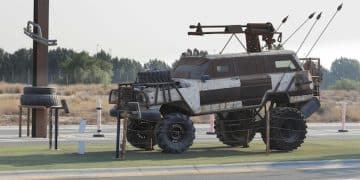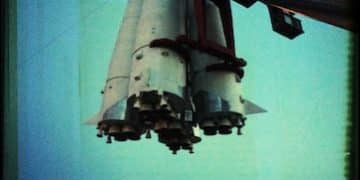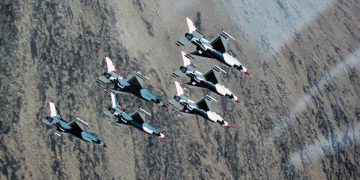Hypersonic Missile Defense: Can the US Achieve Full Capability by 2028?

The United States faces significant challenges in achieving full operational capability in hypersonic missile defense by 2028, despite ongoing efforts to develop and deploy advanced tracking and interception systems to counter this emerging threat from rival nations.
Can the United States realistically achieve full operational capability in hypersonic missile defense by 2028? This question looms large as other nations aggressively develop and deploy these advanced weapons systems.
Understanding the Hypersonic Threat Landscape
The emergence of hypersonic missiles has dramatically altered the strategic landscape, posing a significant challenge to traditional missile defense systems. Unlike ballistic missiles, hypersonic missiles are capable of maneuvering unpredictably and traveling at speeds exceeding Mach 5, making them exceptionally difficult to track and intercept.
Several nations, including Russia and China, have already made significant strides in developing and deploying hypersonic weapons, raising concerns about the potential for these systems to be used in future conflicts. Understanding the capabilities and limitations of these weapons is crucial for developing effective countermeasures.
Key Characteristics of Hypersonic Missiles
Hypersonic missiles possess unique characteristics that distinguish them from other types of missiles. These include:
- Speed: Hypersonic missiles travel at speeds of Mach 5 or higher, making them significantly faster than traditional ballistic or cruise missiles.
- Maneuverability: Unlike ballistic missiles that follow a predictable trajectory, hypersonic missiles can maneuver during flight, making them harder to track and intercept.
- Low Altitude Trajectory: Hypersonic missiles often fly at lower altitudes than ballistic missiles, making them more difficult to detect by radar systems.
The Global Hypersonic Arms Race
The development and deployment of hypersonic weapons have sparked a global arms race, with several nations investing heavily in these technologies. This competition is driven by the desire to maintain a strategic advantage and deter potential adversaries. The United States is working diligently to catch up to its rivals in this critical area. This includes not just offensive capabilities, but the pressing need for robust hypersonic missile defense.
The development of effective hypersonic missile defense systems requires a multi-layered approach that combines advanced tracking technologies, sophisticated interception systems, and robust command and control infrastructure. Overcoming these challenges will be essential for ensuring the security of the United States and its allies in the years to come.
In conclusion, the hypersonic threat landscape is rapidly evolving, presenting new and complex challenges for missile defense. Understanding the characteristics of these weapons and the global dynamics driving their development is essential for developing effective countermeasures and maintaining a strategic advantage.
Current US Missile Defense Capabilities
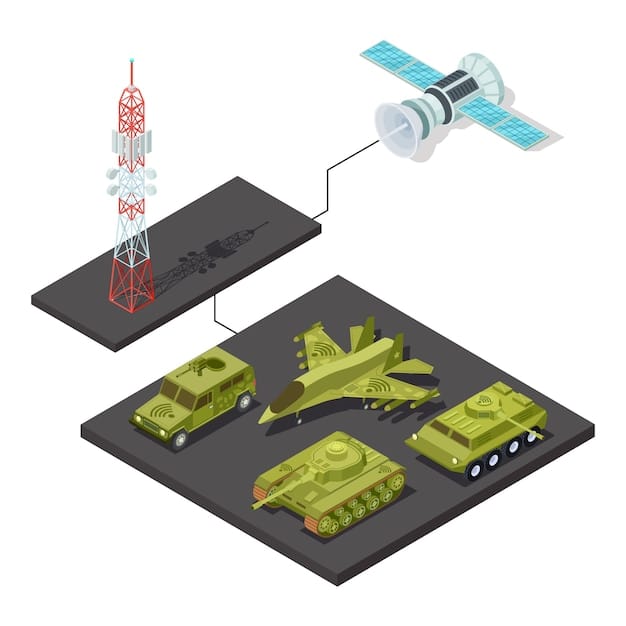
The United States currently relies on a multi-layered missile defense system designed to protect against a range of threats, including ballistic missiles and cruise missiles. However, these existing systems face significant limitations when it comes to countering hypersonic missiles due to their speed and maneuverability.
Several components make up the current US missile defense architecture, including space-based sensors, ground-based radar systems, and interceptor missiles deployed on land and at sea. These systems are designed to work together to detect, track, and intercept incoming threats.
Limitations of Existing Systems
Current US missile defense systems are primarily designed to counter ballistic missiles, which follow a predictable trajectory. Hypersonic missiles, with their speed and maneuverability, pose a different challenge. Key limitations include:
- Tracking Challenges: Existing radar systems may struggle to track hypersonic missiles due to their low altitude and maneuverability.
- Interceptor Limitations: Current interceptor missiles may not be fast enough or maneuverable enough to intercept hypersonic missiles effectively.
- Command and Control Challenges: The speed of hypersonic missiles requires rapid decision-making and response times, which may strain existing command and control systems.
Upgrading Existing Systems
The US military is actively working to upgrade existing missile defense systems to better counter the hypersonic threat. These efforts include:
- Developing new radar systems with improved tracking capabilities.
- Designing new interceptor missiles specifically tailored to intercept hypersonic missiles.
- Enhancing command and control systems to enable faster response times.
While these upgrades represent important steps forward, achieving full operational capability in hypersonic missile defense by 2028 will require significant advancements in technology and integration of new systems.
The Technological Hurdles to Hypersonic Defense
Achieving effective hypersonic missile defense presents a range of technological hurdles. Overcoming these challenges will require significant investments in research and development, as well as collaboration between government, industry, and academia.
One of the primary challenges is the development of advanced tracking systems capable of accurately detecting and tracking hypersonic missiles in real-time. This requires overcoming the limitations of existing radar systems and developing new sensors that can operate in a variety of environmental conditions.
Advanced Tracking Technologies
Several advanced tracking technologies are being explored, including:
- Space-Based Infrared Sensors: These sensors can detect the heat signature of hypersonic missiles, providing early warning of an attack.
- Advanced Radar Systems: New radar systems are being developed with improved tracking capabilities, including the ability to track maneuvering targets.
- Hypersonic Sensors: Specialized sensors designed to detect and track hypersonic missiles are being developed and tested.
Interceptor Technologies
Developing effective interceptor missiles capable of intercepting hypersonic missiles is another major challenge. These interceptors must be fast, maneuverable, and capable of withstanding extreme temperatures and pressures.
Key areas of research include the development of advanced propulsion systems, such as scramjets and ramjets, as well as the development of advanced guidance and control systems that can accurately guide the interceptor to its target.
The Role of Directed Energy Weapons
Directed energy weapons, such as lasers and high-powered microwaves, are also being explored as potential hypersonic missile defense systems. These weapons offer the potential to engage targets at the speed of light, providing a near-instantaneous response.
However, significant technological challenges remain, including the development of lasers powerful enough to destroy hypersonic missiles at long range, as well as overcoming atmospheric interference that can degrade the performance of these weapons.
In conclusion, overcoming the technological hurdles to hypersonic defense will require sustained investment in research and development, as well as a willingness to explore innovative and unconventional approaches.
The Role of Space-Based Assets
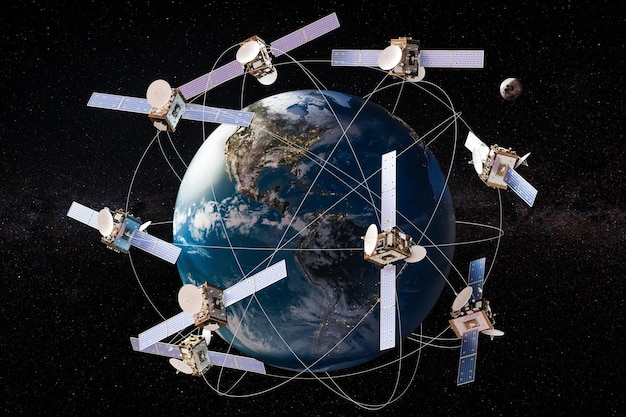
Space-based assets are expected to play a critical role in future hypersonic missile defense systems. Satellites equipped with advanced sensors can provide early warning of hypersonic missile launches and track these weapons as they travel through the atmosphere.
These space-based systems can provide a global, persistent view of potential threats, complementing ground-based radar systems and enabling more effective tracking and interception of hypersonic missiles.
Next-Generation Space Sensors
The US military is investing in the development of next-generation space sensors specifically designed to detect and track hypersonic missiles. These sensors will be capable of detecting the heat signature of hypersonic missiles and tracking their movements in real-time.
One key initiative is the Space-Based Kill Assessment (SBKA) program, which aims to develop a constellation of satellites capable of tracking hypersonic missiles from space. This program is expected to significantly enhance the United States’ ability to detect and respond to hypersonic threats.
Challenges Associated with Space-Based Assets
While space-based assets offer significant advantages for hypersonic missile defense, they also face several challenges. These include:
- Vulnerability to Attack: Satellites are vulnerable to attack from anti-satellite weapons, which could cripple the United States’ ability to detect and track hypersonic missiles.
- High Cost: Developing and deploying space-based assets is extremely expensive, requiring significant investment from the government.
- Technical Complexity: Developing advanced space sensors that can operate in the harsh environment of space is a complex technical challenge.
Despite these challenges, space-based assets are expected to play an increasingly important role in hypersonic missile defense in the years to come. Investing in these technologies will be essential for ensuring the security of the United States and its allies.
In summary, the integration of space-based assets is an essential component of a robust hypersonic missile defense strategy. The ability to detect, track, and ultimately intercept these advanced weapons systems from space will provide a critical advantage in a rapidly evolving threat landscape.
The Policy and Budgetary Considerations
The development and deployment of hypersonic missile defense systems require significant policy and budgetary considerations. The United States government must make strategic decisions about how to prioritize investments in these technologies, as well as how to balance the need for missile defense with other defense priorities.
These decisions involve navigating complex political, economic, and technological factors, as well as coordinating with allies to develop a unified approach to hypersonic missile defense.
Balancing Defense Priorities
Investing in hypersonic missile defense requires making trade-offs with other defense priorities. The government must decide how much funding to allocate to these systems relative to other areas, such as conventional weapons, cyber warfare, and space operations.
This decision-making process involves evaluating the relative risks and benefits of each investment, as well as considering the long-term strategic implications. It needs to make informed budgetary decisions based on credible analysis.
There are difficult decisions to weigh when modernizing the nuclear triad versus focusing on defensive and offensive weapons systems. Given the shifting landscape that is the modern military, budgets must be flexible to adapt to the variety of threats and priorities.
International Cooperation
Developing effective hypersonic missile defense systems requires close cooperation with allies. The United States must work with its partners to develop a unified approach to missile defense, including sharing information, coordinating research and development efforts, and deploying joint defense systems.
This cooperation is essential for ensuring that allies are protected from hypersonic threats and for maintaining a credible deterrent against potential adversaries. Alliances and agreements would provide a more credible defensive posture for the United States.
Domestic Politics
Domestic politics also play a role in shaping policy and budgetary decisions related to hypersonic missile defense. Members of Congress must be convinced of the need for these systems and be willing to allocate funding to their development and deployment.
This can be a challenging process, as different political factions may have different priorities and opinions about the appropriate level of spending on missile defense.
Ultimately, the success of the United States’ efforts to develop and deploy effective hypersonic missile defense systems will depend on making sound policy and budgetary decisions, as well as fostering close cooperation with allies.
Can the US Achieve Full Operational Capability by 2028?
The question of whether the United States can achieve full operational capability in hypersonic missile defense by 2028 is a complex one, with no easy answer. Achieving this goal will require significant advancements in technology, sustained investment in research and development, and close cooperation with allies.
While the United States has made progress in developing advanced tracking systems and interceptor missiles, significant challenges remain. These include:
- Technological Hurdles: Overcoming the technological challenges associated with tracking and intercepting hypersonic missiles.
- Budgetary Constraints: Allocating sufficient funding to support the development and deployment of these systems.
- Integration Challenges: Integrating new systems into the existing missile defense architecture.
Realistic Expectations
Given these challenges, it is unlikely that the United States will achieve full operational capability in hypersonic missile defense by 2028. However, it is possible to make significant progress towards this goal by focusing on key areas of research and development and by fostering close cooperation with allies.
A more realistic expectation is that the United States will have a limited operational capability by 2028, with the ability to defend against some, but not all, hypersonic threats. Achieving full operational capability will likely take longer, requiring sustained investment and effort over the long term.
Moving Forward
To increase the likelihood of achieving full operational capability in hypersonic missile defense, the United States should:
- Prioritize research and development in key areas, such as advanced tracking technologies and interceptor missiles.
- Increase funding for hypersonic missile defense programs.
- Foster close cooperation with allies to develop a unified approach to missile defense.
By taking these steps, the United States can significantly enhance its ability to defend against hypersonic threats and ensure the security of the nation and its allies.
| Key Point | Brief Description |
|---|---|
| 🚀 Hypersonic Speed | Missiles exceed Mach 5, challenging current defense systems. |
| 🛰️ Space-Based Assets | Satellites offer early threat detection and tracking capabilities. |
| 🎯 Interceptor Tech | New missiles needed to intercept hypersonic threats effectively. |
| 💰 Budget Allocation | Strategic funding is essential for hypersonic defense advancements. |
Frequently Asked Questions
▼
Their extreme speed (Mach 5+) and maneuverability make them hard to track and intercept using current missile defense systems, requiring faster reaction times and more agile interceptors.
▼
These include space-based sensors for early detection, advanced radar systems for tracking, directed energy weapons like lasers, and new interceptor missiles designed for high-speed interception.
▼
Satellites equipped with advanced sensors can provide early warning and tracking of hypersonic missiles, complementing and enhancing the capabilities of ground-based radar systems by offering a global view.
▼
Key challenges include developing capable tracking and interception technologies, securing sufficient funding, integrating new systems with existing infrastructure, and addressing vulnerabilities of space-based defense assets.
▼
Yes, collaborating with allies is crucial for developing a unified and effective approach to missile defense. This includes sharing information, coordinating research, and deploying joint defense systems to enhance security.
Conclusion
Despite significant progress, achieving full operational capability in hypersonic missile defense by 2028 remains a formidable challenge for the United States. While a limited, yet enhanced defense capability might be attainable, the evolving threat landscape demands sustained investment, technological innovation, and strong international collaboration to ensure comprehensive security.



